Abstract
Thirty-seven quadriplegic patients with respiratory paralysis were treated by electrical stimulation of the phrenic nerves to pace the diaphragm. Full-time ventilatory support by diaphragm pacing was accomplished in 13 patients. At least half-time support was achieved in 10 others. There were two deaths unrelated to pacing in these two groups. Fourteen patients could not be paced satisfactorily, and 8 of these patients died, most of them from respiratory infections. The average time the 13 patients on total ventilatory support have had bilateral diaphragm pacemakers is 26 months. The longest is 60 months. Many of these patients are out of the hospital and several are in school or working. Injury to the phrenic nerves either by the initial trauma to the cervical cord or during operation for implantation of the nerve cuff was the most significant complication. Nerve damage from prolonged electrical stimulation has not been a problem thus far. A description of the pacemaker, the technique of its implantation, and the pacing schedule are reported.
Full text
PDF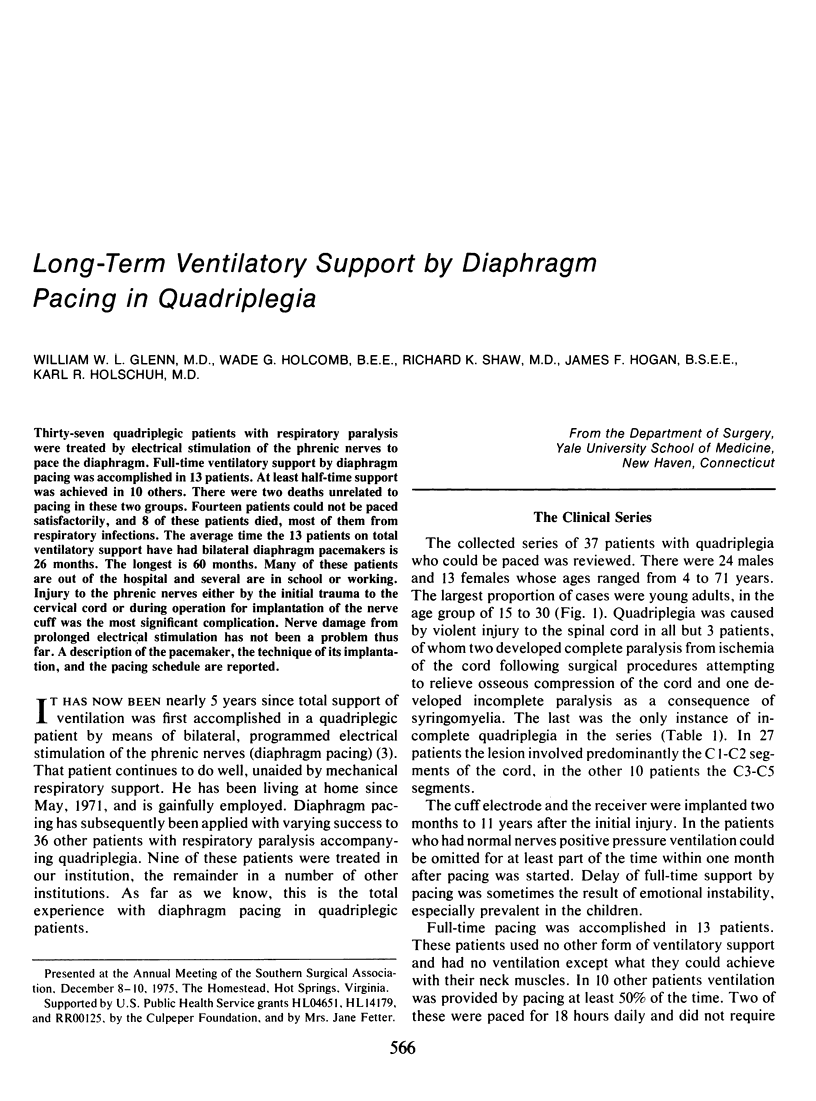


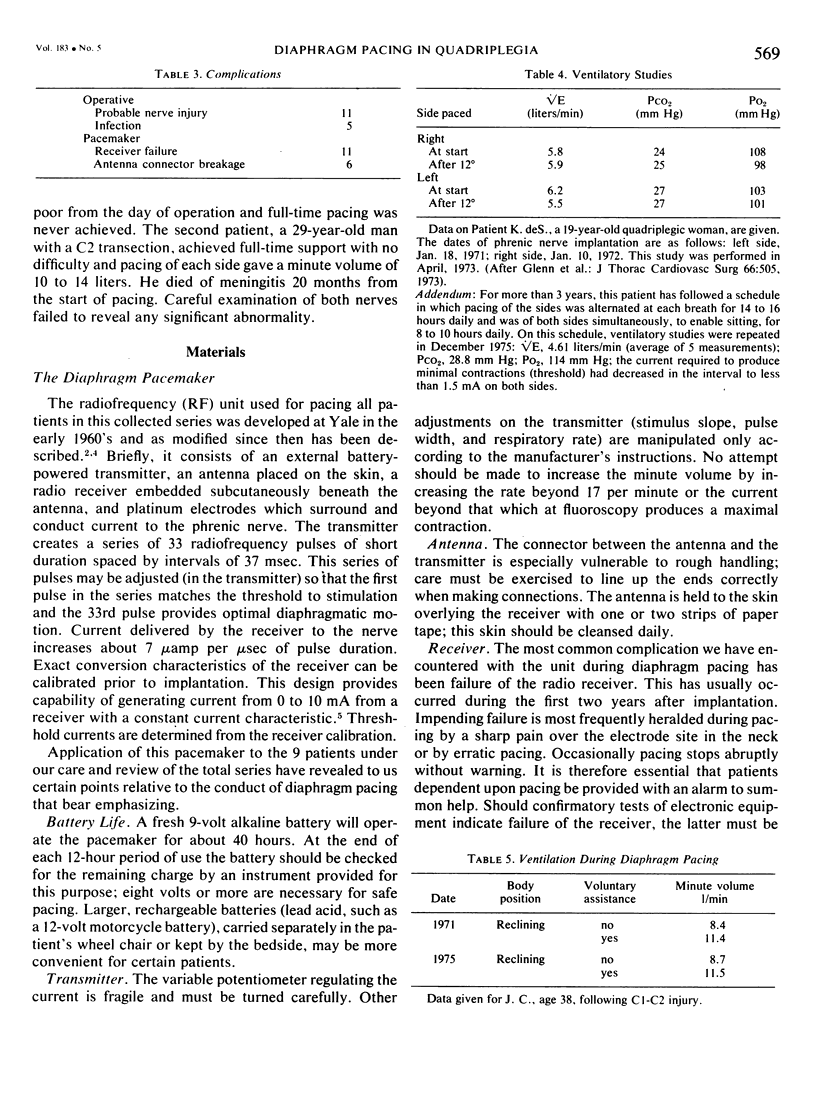
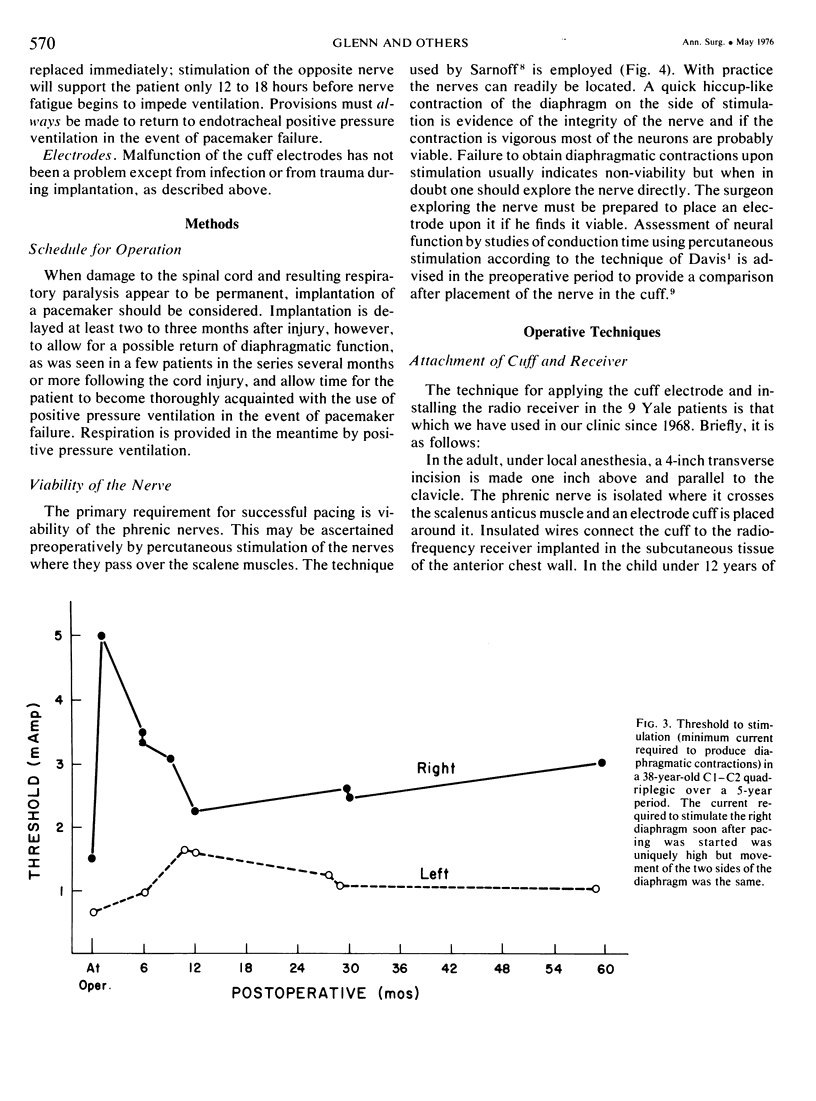
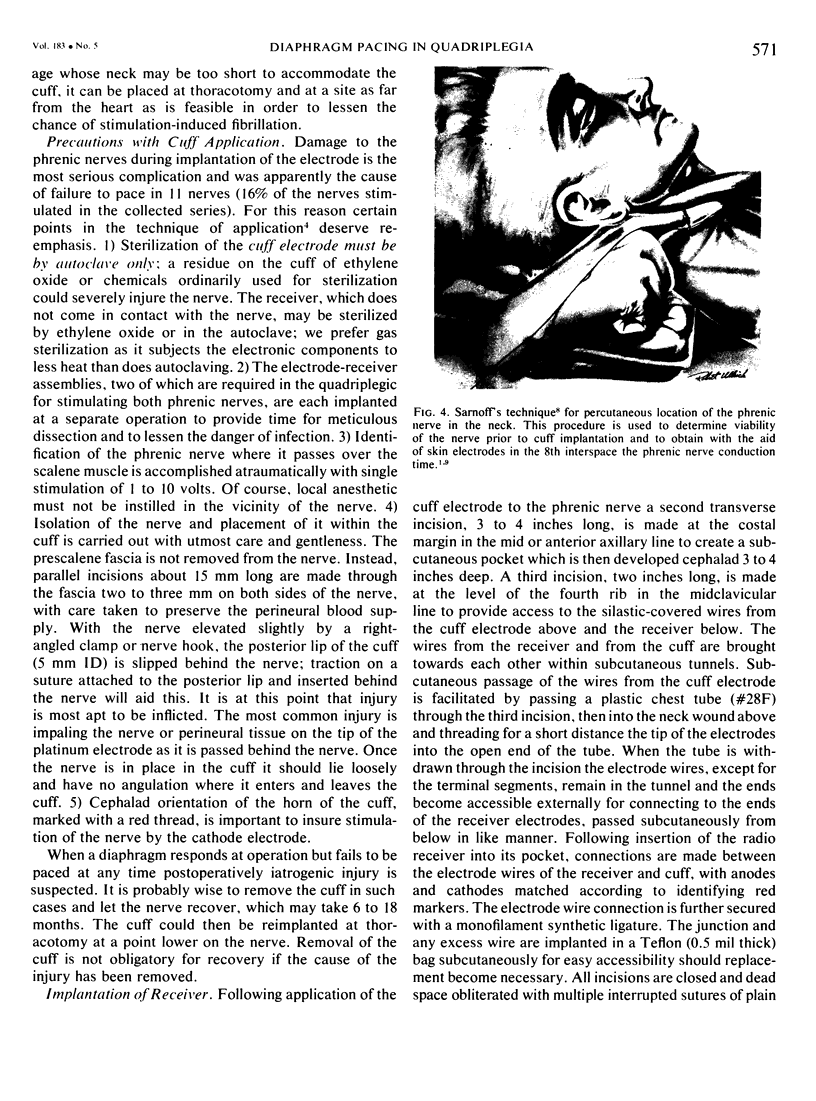
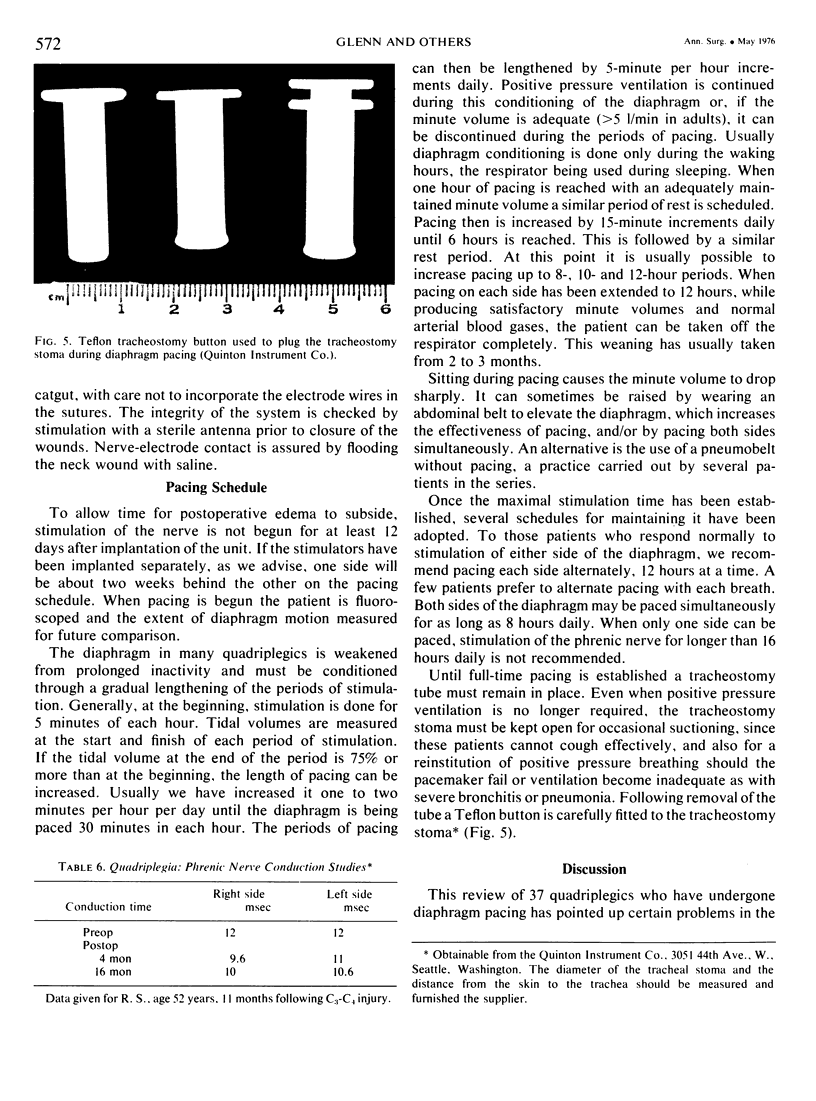
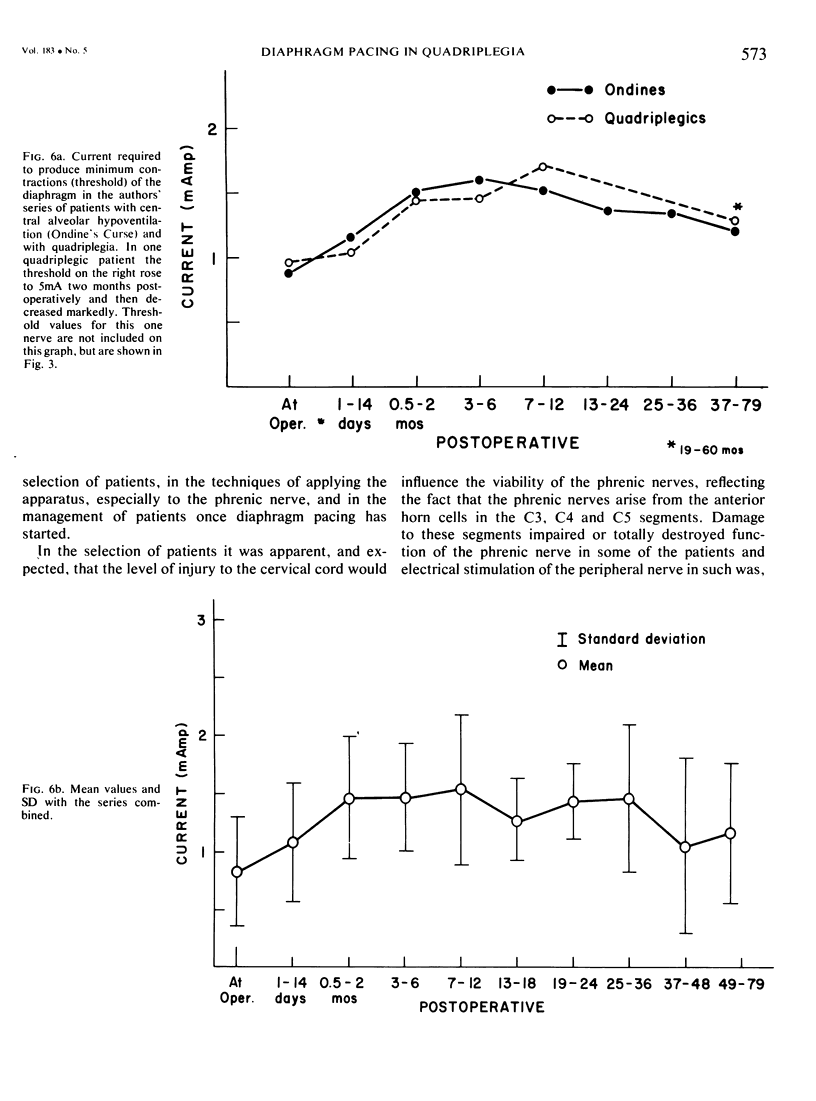



Images in this article
Selected References
These references are in PubMed. This may not be the complete list of references from this article.
- Davis J. N. Phrenic nerve conduction in man. J Neurol Neurosurg Psychiatry. 1967 Oct;30(5):420–426. doi: 10.1136/jnnp.30.5.420. [DOI] [PMC free article] [PubMed] [Google Scholar]
- GLENN W. W., HAGEMAN J. H., MAURO A., EISENBERG L., FLANIGAN S., HARVARD M. ELECTRICAL STIMULATION OF EXCITABLE TISSUE BY RADIO-FREQUENCY TRANSMISSION. Ann Surg. 1964 Sep;160:338–350. [PMC free article] [PubMed] [Google Scholar]
- Glenn W. W., Holcomb W. G., Hogan J., Matano I., Gee J. B., Motoyama E. K., Kim C. S., Poirier R. S., Forbes G. Diaphragm pacing by radiofrequency transmission in the treatment of chronic ventilatory insufficiency. Present status. J Thorac Cardiovasc Surg. 1973 Oct;66(4):505–520. [PubMed] [Google Scholar]
- Glenn W. W., Holcomb W. G., McLaughlin A. J., O'Hare J. M., Hogan J. F., Yasuda R. Total ventilatory support in a quadriplegic patient with radiofrequency electrophrenic respiration. N Engl J Med. 1972 Mar 9;286(10):513–516. doi: 10.1056/NEJM197203092861004. [DOI] [PubMed] [Google Scholar]
- Krieger A. J., Detwiler J. S., Fandozzi R. Electrophrenic respiration: a breathing support system in quadriplegia. Crit Care Med. 1974 May-Jun;2(3):155–158. [PubMed] [Google Scholar]
- SARNOFF S. J., SARNOFF L. C., WITTENBERGER J. L. Electrophrenic respiration. VII. The motor point of the phrenic nerve in relation to external stimulation. Surg Gynecol Obstet. 1951 Aug;93(2):190–196. [PubMed] [Google Scholar]
- Shaw R. K., Gleen W. W., Holcomb W. G. Phrenic nerve conduction studies in patients with diaphragm pacing. Surg Forum. 1975;26:195–197. [PubMed] [Google Scholar]




